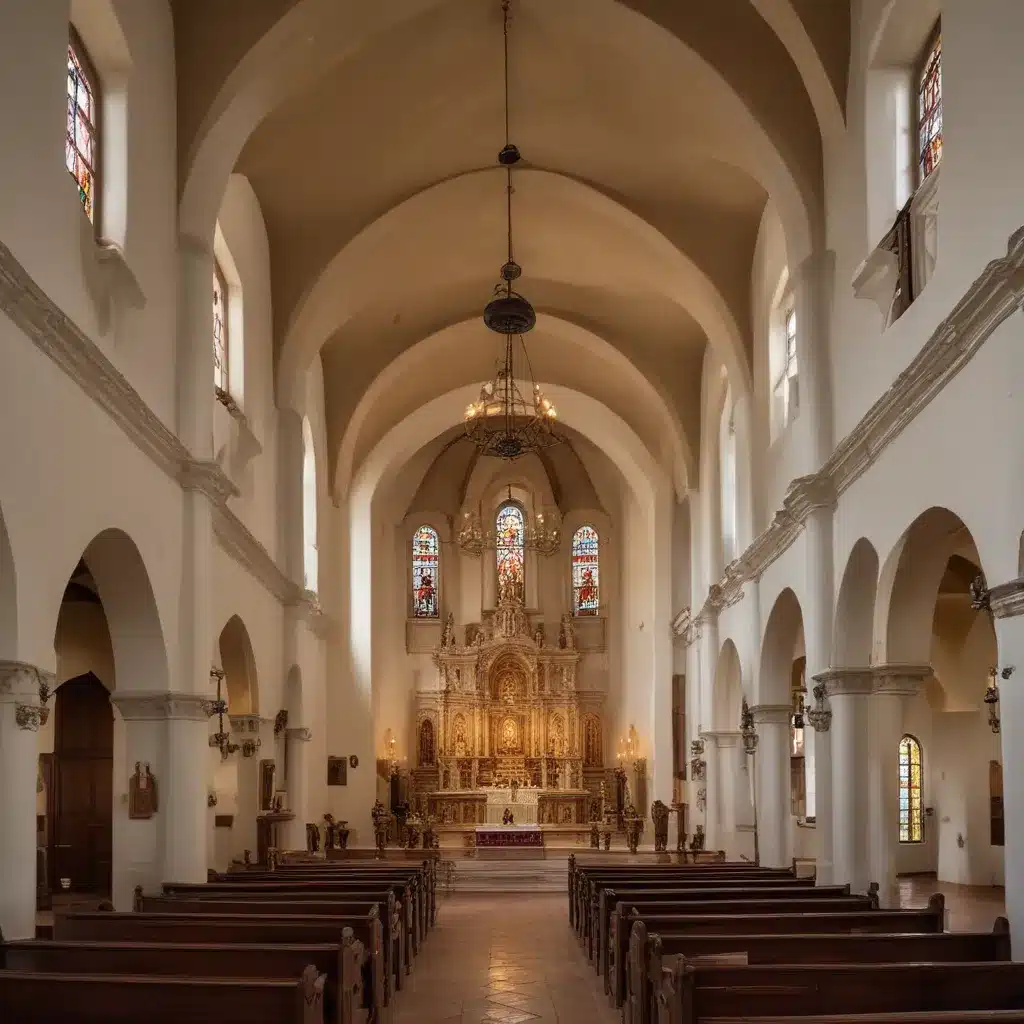
Exploring the Rich Tapestry of Philippine History Through its Magnificent Churches
As I step through the ornate arched entryway of the San Agustin Church in Manila, I can’t help but be awestruck by the sheer grandeur that surrounds me. The towering vaulted ceilings, the intricate hand-carved wooden altars, and the vibrant frescoes adorning the walls – it’s as if I’ve been transported back in time to the height of the Spanish colonial era.
This magnificent church, designated as a UNESCO World Heritage Site, is just one of the many architectural treasures that dot the Philippines’ landscape. From the northern islands of Luzon to the southern reaches of Mindanao, the country is home to an astounding collection of Spanish colonial churches that have stood the test of time, serving as living testaments to the country’s rich and often tumultuous history.
Uncovering the Captivating Stories Behind the Churches
As I wander through these sacred spaces, I can’t help but wonder about the countless stories they hold – the triumphs and tragedies, the faith and fervor, the cultural exchange and clashes that have all played out within their hallowed walls. Each church, it seems, has its own unique tale to tell.
Take, for instance, the Baclayon Church in Bohol. This imposing stone structure, with its thick buttresses and massive bell tower, was constructed in the 16th century by Jesuit missionaries. But its history is not without its dark chapters – the church was heavily damaged during the 2013 earthquake that rocked the region, a poignant reminder of the fragility of even the most seemingly indestructible structures.
Or consider the Paoay Church in Ilocos Norte, known for its distinctive “earthquake baroque” architecture, with its massive buttresses and slanted bell tower. This architectural marvel was designed to withstand the powerful tremors that have plagued the area for centuries, a testament to the ingenuity and resilience of its builders.
Appreciating the Architectural Artistry of the Churches
But the Spanish colonial churches of the Philippines are not merely functional structures – they are also true masterpieces of art and architecture. The intricate carvings, the stunning frescoes, and the ornate altars all bear witness to the incredible skill and craftsmanship of the artisans who brought these sacred spaces to life.
Take, for instance, the Miag-ao Church in Iloilo, with its distinctive facade featuring a towering stone façade adorned with carvings of native flora and fauna. Or the Baclayon Church, with its intricate wooden altars and ornate chandeliers that seemingly transport you to another era.
As I wander through these churches, I can’t help but marvel at the level of detail and artistry that has gone into their creation. It’s as if the very walls are imbued with the stories and emotions of the countless worshippers who have passed through their doors over the centuries.
Preserving the Legacy of the Spanish Colonial Churches
But these architectural gems are not mere relics of the past – they continue to play a vital role in the lives of the Filipino people. Many of these churches remain active places of worship, with parishioners gathering to celebrate mass and observe the rich traditions and customs that have been passed down through generations.
Yet, despite their enduring significance, the Spanish colonial churches of the Philippines face a constant battle against the ravages of time and nature. Earthquakes, typhoons, and the simple wear and tear of age all pose a constant threat to their preservation.
Organizations like the National Commission for Culture and the Arts and the Heritage Conservation Society have been working tirelessly to protect and restore these precious landmarks, ensuring that they can continue to captivate and inspire generations to come. Through their efforts, the legacy of the Spanish colonial churches lives on, a testament to the enduring spirit and resilience of the Filipino people.
Experiencing the Churches as a Unique Cultural Immersion
But for me, the true magic of these Spanish colonial churches lies not just in their architectural splendor or their historical significance, but in the way they allow visitors to immerse themselves in the rich tapestry of Philippine culture and traditions.
https://philippinegetaway.com/
Whether it’s attending a festive religious celebration, participating in a traditional cleansing ritual, or simply taking the time to soak in the atmosphere of these sacred spaces, there’s an undeniable sense of connection to the country’s past that permeates every moment.
As I sit in the pews of the Baclayon Church, watching the sunlight stream through the stained-glass windows, I can almost feel the weight of centuries of history pressing down upon me. It’s a humbling and awe-inspiring experience, one that reminds me of the enduring power of these architectural masterpieces to captivate and inspire.
Embarking on a Spiritual and Cultural Journey
And that’s why I believe that a visit to the Spanish colonial churches of the Philippines is more than just a sightseeing excursion – it’s a true cultural and spiritual journey. Whether you’re drawn to the architectural marvels, the historical significance, or the rich traditions and customs that permeate these sacred spaces, there’s something here for everyone to discover and explore.
So why not join me on a weekend getaway or cultural exploration tour to uncover the hidden gems of the Philippines’ Spanish colonial heritage? From the verdant landscapes of Bohol to the bustling streets of Manila, there’s a wealth of adventure and discovery waiting to be had. And who knows – you might just find yourself transported to another time and place, captivated by the timeless beauty and enduring legacy of these architectural wonders.


